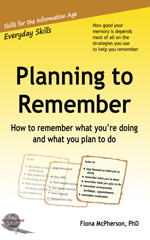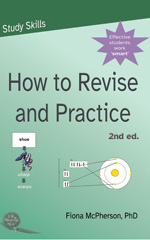More about motor memory
I don’t often talk about motor or skill memory — that is, the memory we use when we type or drive a car or play the piano. It’s one of the more mysterious domains of memory. We all know, of course, that this is a particularly durable kind of memory. It’s like riding a bicycle, we say — meaning that it’s something we’re not likely to have forgotten, something that will come back to us very readily, even if it’s been a very long time since we last used the skill.
For several decades there’s been argument over where motor memory is created. Now at last the dispute has apparently been settled, in favor of both contenders. What we needed to clarify the evidence was to realize that short-term motor memory is a quite different animal from long-term motor memory, and the two are created in different places.
The differences between short- and long-term motor memory have important implications, so let’s take a look at them.
First of all, it appears that short-term motor memory is created in the Purkinje cells of the cerebellar cortex, while long-term motor memory is transferred to the vestibular nucleus (axons from the Purkinje cells extend from the cerebellum to the vestibular nucleus in the medulla oblongata.
A similar process occurs of course in other types of memory. Most memory (for experiences, for information) is created in the hippocampus, and later passed on to regions in the cerebral cortex for long-term storage. However, that process of consolidation and transfer takes weeks. Motor memory moves from short-term to long-term much more quickly — within as little as a few hours, in some cases, or a few days at most.
There’s another important way in which motor memory differs from ‘ordinary’ memory. Again, it’s not qualitatively different, but an extension of the normal process. We don’t usually remember everything. Long-term memory is more a memory of gist than precision. Details are lost; what we remember for the most part are the broad strokes on the canvas. Similarly (though rather more markedly perhaps), short-term motor memory is quickly lost, passing on only the rough shape of the process to long-term memory.
For example, in the mouse experiments that demonstrated all this, the mice were taught to follow the movement of an object by moving their eyes in a particular way. With practice they got better at this particular eye movement, and if they practiced the task on a daily basis for several days, they were able to maintain this skill. It had been established in long-term memory.
However, this is a simple skill. When monkeys were taught a more complex skill — to follow a moving ball as its speed increases for a fifth to a tenth of a second — although they usually mastered the task quite quickly, it was also forgotten just as quickly. The researchers say such “sophisticated” motor memory is easily lost in just ten to 15 minutes.
A more human example is how a baseball batter can learn to hit a curve ball after the movement of the ball has been observed several times and memorized. It’s an advantage to pick this information up quickly, but the price seems to be that it is also forgotten quickly.
Riding a bicycle is the archetypal example of the durability of motor memory, but there’s also always a caveat: with just a little practice, we say, you’ll pick it up again. But you need that practice, and to get as skilled as you were in your heyday, you need more practice. Motor memory may be durable, but it’s only the broad outlines of the procedure that are ‘locked in’.
Of course, what constitutes the ‘broad outlines’ is clearly something that must change with practice. A concert pianist who’s been in retirement for five years and someone who learned the piano as a child are not starting off on the same foot! The ‘broad outlines’ the concert pianist has salted away must be considerably more sophisticated than those of the childhood pianist. It would be interesting to see the differences between experts and novices explored.
But in the meantime, there are two useful lessons we can take from these studies. The first is the need to brush up your skills before expecting them to be at their best (the researchers suggest that even professional musicians, accustomed to playing every day, need to ‘remind’ themselves of their skill before a concert). The second is one connected to the speed with which short-term motor memory transfers to long-term memory.
The researchers found that the animals learned more quickly when their training was broken into shorter intervals with breaks — for example, dividing an hour-long training session into four 15-minute exercises with intervals of 30 minutes between them. For this to be true, however, the cerebellar cortex needed to be active. This implies that something happens in this part of the brain during periods of inactivity that’s important for creating long-term memory. I’m reminded here of other recent research pointing to the importance of “quiet time” for consolidating new learning.
None of this contradicts what we already know about how to learn and practice a skill, but it does add to our understanding and reinforces the idea that it’s better to practice a skill regularly in small bites, rather than in lengthy sessions (I’m not denouncing the long sessions a musician, say, puts in on a daily basis. But the recommendation would be not to practice one specific thing for too long at one go — better to move on to something else, and, repeatedly, come back to it.)
For more about how to practice, check out Learning a new skill, Spacing your learning and Acquiring expertise through deliberate practice

